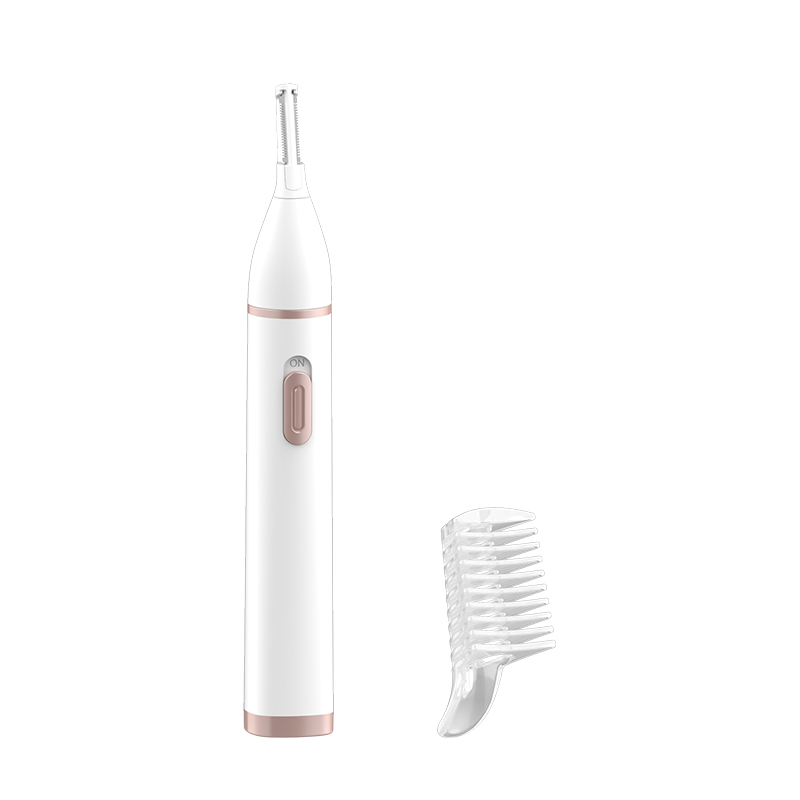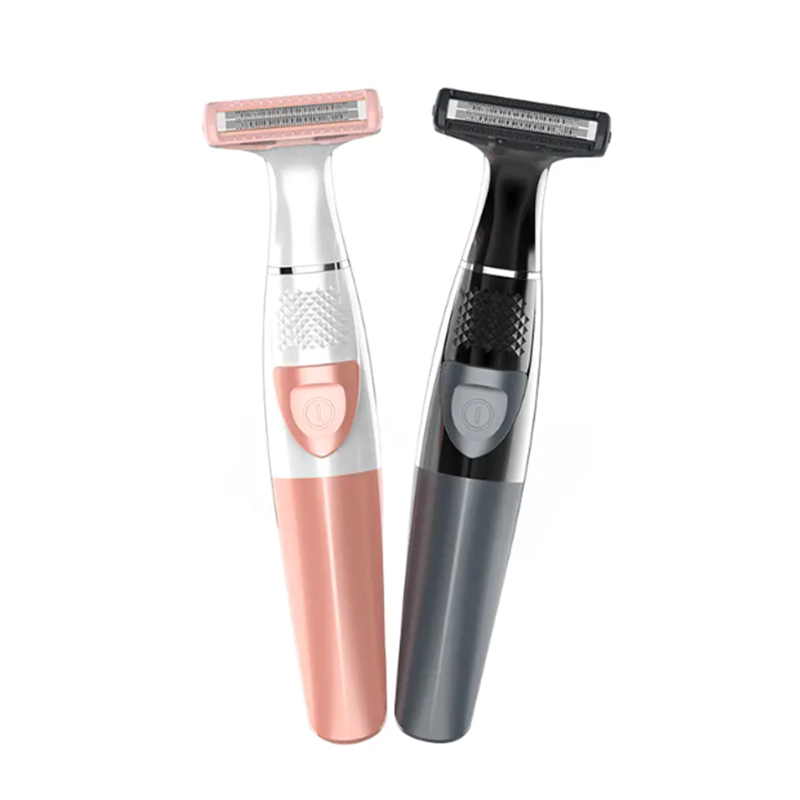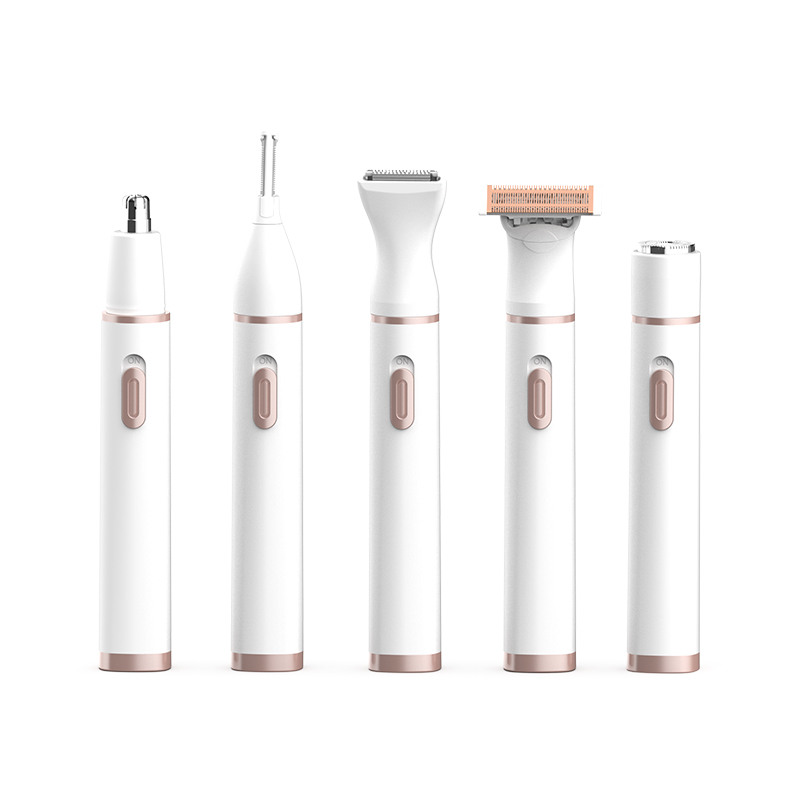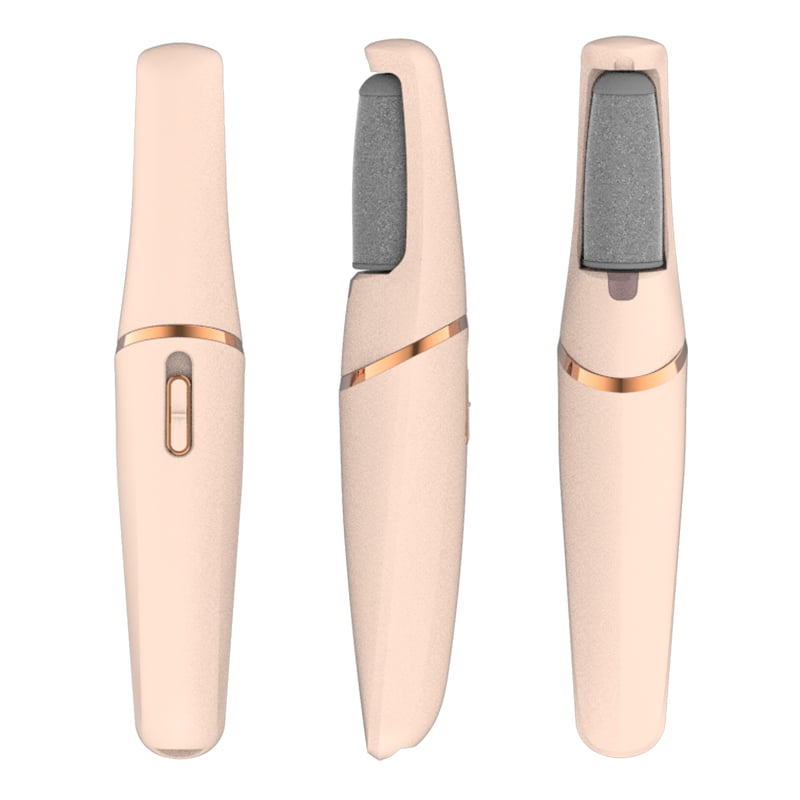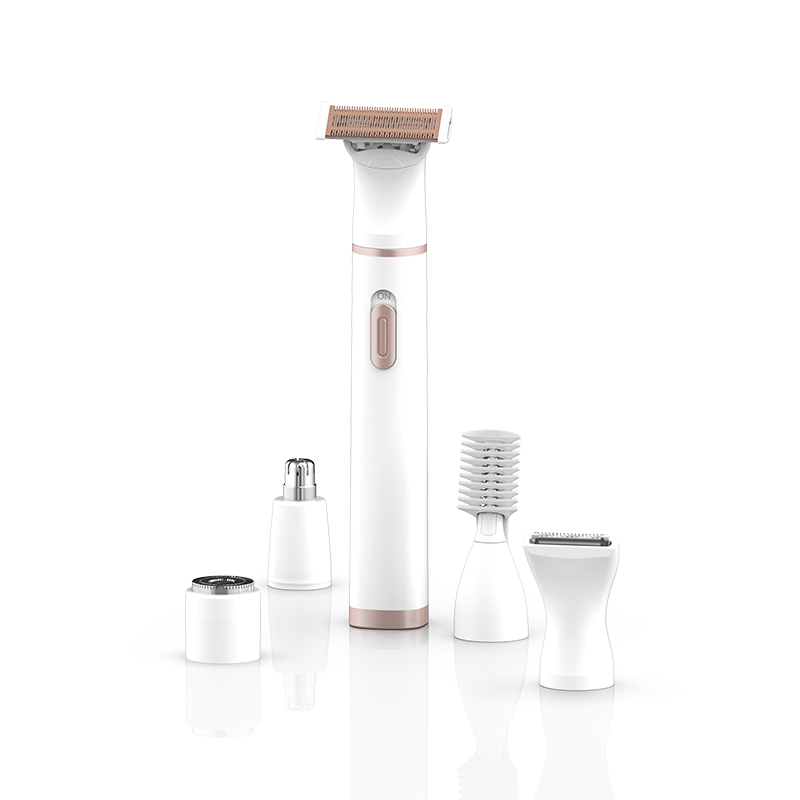News Category:
Key Words:
-
Dec 12,2025
What Are the Environmental Benefits of Using a Washable Electric Shaver?
Introduction to Washable Electric Shavers The Washable Electric Shaver has become increasingly popular among consumers seeking convenience and sustainability. Unlike traditional disposable razors, these shavers are designed for long-term use and easy cleaning, offering significant environmental advantages. Reduced Plastic Waste One of the most obvious benefits of a Washable Electric Shaver is its potential to reduce plastic waste. Traditional disposable razors are often made of plastic and are thrown away after a few uses, contributing heavily to landfills. In contrast, a washable shaver can last for years, significantly lowering the amount of single-use plastic discarded. Comparison with Disposable Razors Disposable Razors: Typically used a few times and then discarded. Washable Electric Shaver: Can be reused for years with proper maintenance, reducing plastic consumption. Energy Efficiency and Water Conservation Modern Washable Electric Shavers are designed to be energy-efficient. Many models feature rechargeable batteries that minimize electricity usage. Additionally, the washable feature allows for easy cleaning without excessive water use, unlike traditional shaving methods that often require running water continuously. Cost Savings and Sustainability Investing in a Washable Electric Shaver also provides economic benefits while supporting sustainable practices. Although the initial cost may be higher than disposable razors, the long lifespan and reduced need for replacement blades or units make it a more cost-effective and environmentally responsible choice. Long-Term Benefits Fewer products sent to landfills Lower carbon footprint over time Reduced need for packaging materials Frequently Asked Questions (FAQ) 1. Can a washable electric shaver be used in the shower? Yes, most Washable Electric Shavers are waterproof and safe for wet use, making them convenient for shower shaving while minimizing water wastage. 2. How long does a washable electric shaver last? With proper care, a high-quality Washable Electric Shaver can last anywhere from 5 to 10 years, depending on usage and maintenance. 3. Are they really better for the environment? Absolutely. By reducing plastic waste, lowering energy consumption, and minimizing the need for disposable products, Washable Electric Shavers contribute to a more sustainable lifestyle. Conclusion Switching to a Washable Electric Shaver is a simple yet impactful way to support environmental sustainability. By reducing plastic waste, conserving energy and water, and providing long-term cost savings, these shavers offer a practical solution for eco-conscious consumers.
VIEW FULL ARTICLE -
Dec 05,2025
Why a Washable Electric Shaver is the Perfect Choice for Sensitive Skin
Introduction to Washable Electric Shavers A Washable Electric Shaver has emerged as a game-changer for those with sensitive skin. Unlike traditional manual razors or non-washable shavers, these devices combine cutting-edge technology with user-friendly design, providing a comfortable and hygienic shaving experience. Sensitive skin often reacts to friction, harsh blades, and chemical irritants, making a gentle yet efficient shaving solution essential. Washable electric shavers deliver exactly that by minimizing irritation while maintaining precision. Key Advantages for Sensitive Skin 1. Gentle on the Skin One of the main benefits of a Washable Electric Shaver is its gentle approach. The shaver uses a floating or foil head that adapts to facial contours, reducing direct contact with the skin. This design decreases the risk of nicks, cuts, and razor burn, which are common problems for individuals with sensitive skin. 2. Reduced Irritation Electric shavers designed for washing often feature hypoallergenic blades or coatings, which further reduce skin irritation. Unlike traditional razors, these shavers do not require heavy shaving cream or gels that may trigger allergic reactions, making them ideal for daily use. 3. Hygienic and Easy to Clean The washable feature allows the shaver to be rinsed directly under running water, ensuring thorough cleaning and reducing bacterial buildup. A clean shaver prevents acne breakouts and skin infections that are common when dirt and hair accumulate in traditional shaver blades. Design Features That Enhance Comfort 1. Ergonomic Handle Most Washable Electric Shavers are designed with an ergonomic handle to ensure a secure grip, even when wet. This reduces the risk of slipping and accidental cuts, which is particularly important for users with sensitive skin who need controlled movements during shaving. 2. Flexible Shaving Heads Flexible or pivoting shaving heads adjust to the natural curves of the face and neck. This flexibility ensures even pressure distribution and reduces skin trauma, providing a smoother, more comfortable shave. 3. Multi-Functional Settings Many models come with adjustable speed settings and trimming attachments, allowing users to customize their shaving experience according to their skin type and hair thickness. This customization is crucial for sensitive skin, which may require slower or gentler shaving modes. Convenience and Portability 1. Cordless Operation Most washable electric shavers are battery-operated, offering cordless convenience. Users can shave anytime, anywhere, without worrying about tangled cords or outlet availability. This portability is especially useful for travelers and individuals who value efficiency. 2. Quick and Efficient Electric shavers are designed to save time. They provide a close shave in minutes without the need for repeated strokes, minimizing skin irritation caused by excessive rubbing. The washable function also simplifies cleaning, allowing users to maintain their shaver effortlessly. Maintenance and Longevity 1. Easy Cleaning Simply rinse the shaving head under water after each use. Some models also offer detachable heads for deep cleaning. Regular cleaning prevents hair accumulation, maintains blade sharpness, and prolongs the life of the shaver. 2. Battery Care For rechargeable models, it’s recommended to fully charge the shaver before initial use and avoid overcharging. Proper battery care ensures consistent performance and extends the shaver's lifespan. 3. Blade Replacement Most manufacturers suggest replacing the shaving heads or blades every 12-18 months, depending on usage frequency. Keeping blades sharp ensures smooth shaving and prevents irritation. Environmental Benefits Choosing a Washable Electric Shaver also has environmental advantages. Unlike disposable razors, which contribute to plastic waste, washable electric shavers are reusable for years. Fewer disposable products mean a smaller environmental footprint and reduced household waste. Ideal Users Individuals with sensitive or easily irritated skin Those prone to acne or razor bumps Frequent travelers who need a portable grooming solution Anyone seeking a hygienic and low-maintenance shaving option Comparison with Traditional Shaving Methods 1. Traditional Razors Manual razors often require shaving cream, have a higher risk of cuts, and can cause irritation on sensitive skin. They also accumulate bacteria if not cleaned properly. 2. Non-Washable Electric Shavers While safer than manual razors, non-washable shavers are harder to clean, which can lead to bacterial buildup over time. Washable electric shavers provide the same comfort but with superior hygiene and easy maintenance. Tips for Optimal Shaving with Sensitive Skin Wash your face with warm water before shaving to soften hair. Use the shaver gently without pressing too hard on the skin. Clean the shaver after each use to maintain hygiene. Moisturize the skin after shaving to reduce dryness and irritation. Frequently Asked Questions (FAQ) Q1: Can a washable electric shaver be used in the shower? Yes, most washable electric shavers are designed for wet and dry use, making them perfect for quick morning routines in the shower. Always check the manufacturer’s specifications before submerging in water. Q2: Are washable electric shavers suitable for all hair types? Yes, these shavers can handle various hair types, from fine to coarse. Adjustable speed settings or multiple shaving heads allow for customization according to individual hair texture. Q3: How often should the shaver be cleaned? Rinse the shaving head under running water after each use. For a deeper clean, detach the head and wash it thoroughly once a week. Q4: Can washable electric shavers reduce razor bumps? Absolutely. The gentle, non-irritating shaving motion combined with hypoallergenic blades helps minimize razor bumps and skin inflammation. Q5: How long does a washable electric shaver battery last? Battery life varies by model, but most rechargeable shavers provide 40-90 minutes of cordless use per full charge. Some models also offer quick charge options for emergency use. Conclusion A Washable Electric Shaver is an ideal grooming tool for anyone with sensitive skin. Its combination of gentle shaving, hygienic maintenance, ergonomic design, and versatile features ensures a safe and efficient shaving experience. By choosing a washable electric shaver, users can enjoy smooth, irritation-free skin while benefiting from long-term durability and environmental sustainability.
VIEW FULL ARTICLE -
Nov 28,2025
What Are the Top Features to Look for in a Washable Electric Shaver?
Choosing the right Washable Electric Shaver can make a significant difference in your daily grooming routine. With countless options available on the market, it's essential to focus on the features that enhance convenience, performance, and durability. 1. Fully Waterproof Design One of the most important features of a Washable Electric Shaver is its waterproof capability. This allows for easy cleaning under running water and provides the flexibility to use the shaver in the shower. Always check the manufacturer’s specifications to ensure the shaver is fully waterproof rather than just water-resistant. 2. High-Quality Blades Sharp and durable blades are crucial for a smooth shave. Look for stainless steel or titanium blades that maintain their sharpness over time. Some models offer self-sharpening blades, which reduce maintenance needs and ensure consistent performance. 3. Versatile Shaving Heads A top-notch Washable Electric Shaver often comes with multiple shaving heads or attachments. These may include a trimmer for sideburns, a precision head for hard-to-reach areas, or a foil head for sensitive skin. Versatility ensures a tailored grooming experience for every user. 4. Long Battery Life and Quick Charging Battery performance is a key factor in electric shavers. Look for models that provide at least 45–60 minutes of cordless use after a full charge. Quick charging features are also beneficial for those last-minute grooming needs. 5. Ergonomic and Comfortable Design An ergonomic handle and lightweight design improve maneuverability and reduce hand fatigue during use. Many modern Washable Electric Shaver models also feature anti-slip grips for enhanced safety, especially when used in wet conditions. 6. Easy Maintenance Maintenance is simple with washable shavers. A shaver that can be fully rinsed under water and comes with a cleaning brush or stand ensures hygiene and prolongs the device's lifespan. Some premium models even feature automatic cleaning and charging stations. FAQs About Washable Electric Shavers Q1: Can I use a washable electric shaver with shaving cream? Yes, most waterproof shavers are designed to work with both wet and dry shaving. However, always check the product instructions to confirm compatibility. Q2: How often should I replace the blades? Blade replacement depends on usage, but generally every 12–18 months. Self-sharpening blades may last longer. Q3: Are washable electric shavers suitable for sensitive skin? Absolutely. Many models feature hypoallergenic blades and adjustable speed settings to minimize irritation for sensitive skin. Q4: How do I properly clean my washable electric shaver? Rinse the shaver under running water after each use, use the provided brush for hard-to-reach areas, and follow the manufacturer’s instructions for deep cleaning or charging station maintenance. Conclusion Investing in a high-quality Washable Electric Shaver enhances your grooming experience by providing convenience, efficiency, and long-lasting performance. By prioritizing features such as waterproof design, durable blades, versatile heads, and easy maintenance, you can find the perfect shaver that suits your lifestyle.
VIEW FULL ARTICLE -
Nov 21,2025
How Does a Washable Electric Shaver Make Cleaning and Maintenance Easier?
A washable electric shaver is a game-changer when it comes to simplifying personal grooming routines. Unlike traditional shavers that require regular manual cleaning, a washable electric shaver is designed to be cleaned easily under running water, making maintenance a breeze. Benefits of a Washable Electric Shaver There are several key reasons why a washable electric shaver is a superior option for many: Easy to Clean: The most obvious advantage is the ease of cleaning. With a washable design, you can rinse the shaver's head under water after each use, removing debris, hair, and shaving cream residue without hassle. Improved Hygiene: Regular cleaning of a shaver ensures better hygiene, reducing the buildup of bacteria or germs that can thrive in neglected, uncleaned shavers. Time-Saving: Because you don't need to disassemble or carefully clean each component, a washable shaver saves you valuable time. Simply rinse it under water and you’re done! Longer Lifespan: With regular cleaning, the internal components of the shaver are less likely to clog, leading to smoother performance and potentially a longer product lifespan. Convenient for Daily Use: Whether you’re in a rush or taking your time with a leisurely shave, the simplicity of rinsing your electric shaver makes it more user-friendly for daily use. How to Properly Clean a Washable Electric Shaver While the concept is straightforward, here are a few tips on how to get the most out of your washable electric shaver: Rinse After Every Use: After each shave, turn off your shaver, remove the head (if necessary), and rinse it thoroughly under running water. Avoid using hot water, as this can damage some models. Use a Cleaning Brush (Optional): If your shaver has more stubborn hair buildup, use the included cleaning brush to gently remove any residue. Dry Completely: Allow your shaver to dry completely before storing it to prevent moisture buildup inside the device. Periodically Replace Parts: Some shavers have removable parts, such as the blade or foil. These should be replaced periodically to ensure the best performance. Frequently Asked Questions (FAQ) 1. Can I use a washable electric shaver in the shower? Yes, many washable electric shavers are waterproof and designed for wet and dry use, meaning you can use them in the shower for added convenience. Just make sure your model is labeled as waterproof. 2. Do I need to clean my shaver after every use? For optimal performance and hygiene, it's recommended to clean your washable electric shaver after every use. This prevents hair and shaving cream buildup, which can affect shaving quality. 3. How often should I replace the head of my washable electric shaver? The frequency of replacement depends on your usage and the brand. On average, it's recommended to replace the shaving head every 12 to 18 months. 4. Can I use soap or shaving cream with a washable electric shaver? Yes, you can use shaving cream or gel with most washable electric shavers, though some models may work better with dry shaving. Always check the manufacturer’s recommendations. 5. Are all electric shavers washable? No, not all electric shavers are designed to be washable. Always look for a model labeled as "washable" or "waterproof" to ensure it's safe for cleaning under water. A washable electric shaver makes personal grooming easier, cleaner, and more efficient. With minimal effort, you can keep your shaver in top condition, enhancing its performance and prolonging its life. Whether you're a first-time user or upgrading to a more convenient model, the washable electric shaver is an excellent investment for anyone looking to simplify their shaving routine.
VIEW FULL ARTICLE -
Nov 14,2025
Why Should You Choose a Washable Electric Shaver Over a Regular Electric Shaver?
In today’s fast-paced world, personal grooming is more than a routine—it's an essential part of maintaining confidence and hygiene. While regular electric shavers have been a staple for decades, washable electric shavers offer a modern, convenient alternative that enhances your shaving experience. Here's why switching could be the best decision for your grooming routine. 1. Superior Hygiene and Easy Cleaning One of the most significant advantages of a washable electric shaver is its ability to be cleaned under running water. Unlike regular shavers, which require manual brushing and complicated maintenance, washable shavers allow you to: Quickly rinse away hair, dirt, and skin residues. Prevent bacterial buildup for a healthier shave. Maintain optimal performance without hassle. 2. Convenience for Daily Use A washable electric shaver simplifies daily grooming routines. Many models are fully waterproof, allowing use in the shower or with shaving creams and gels. This convenience makes your morning routine faster and more efficient while ensuring a smooth and comfortable shave. 3. Longer Lifespan and Performance Regular electric shavers can clog easily, reducing efficiency over time. Washable models, on the other hand, remain clean and sharp longer because they are easier to maintain. By keeping the blades free of debris, you enjoy: Consistent cutting performance. Less irritation and smoother skin. Extended lifespan of the device, making it a cost-effective choice. 4. Eco-Friendly and Cost-Efficient Many washable shavers are designed to reduce waste by eliminating the need for disposable shaving heads or cartridges. Investing in a washable electric shaver not only benefits your wallet but also contributes to a more sustainable lifestyle. Conclusion Choosing a washable electric shaver over a regular electric shaver is more than just a modern upgrade. With superior hygiene, convenience, long-lasting performance, and eco-friendly benefits, it’s an intelligent choice for anyone seeking a better grooming experience. Make the switch today and enjoy a cleaner, smoother, and more efficient shave every day.
VIEW FULL ARTICLE -
Nov 07,2025
What Are the Key Benefits of Using a Washable Electric Shaver for Your Daily Grooming Routine?
Maintaining a clean and well-groomed appearance has never been easier thanks to modern grooming tools. Among these, the Washable Electric Shaver stands out as a versatile, efficient, and hygienic solution for daily use. Here, we explore the key benefits of incorporating this grooming tool into your routine. 1. Enhanced Convenience and Time-Saving One of the primary advantages of a Washable Electric Shaver is its ability to simplify daily grooming. Unlike traditional razors, these shavers require minimal preparation and allow for quick touch-ups, whether at home or on the go. Quick Shaving Experience With advanced motor technology, washable electric shavers provide fast and smooth results. You can achieve a precise shave in a fraction of the time it would take with manual razors, making it ideal for busy mornings. Easy Cleaning The washable design means that you can rinse the shaver directly under running water after use. This eliminates the need for additional cleaning tools and ensures the device remains hygienic, ready for the next use. 2. Superior Hygiene and Skin Protection Using a Washable Electric Shaver can significantly improve skin health. Regular rinsing removes hair clippings, skin cells, and shaving cream residue, reducing the risk of bacterial growth. Reduced Skin Irritation Electric shavers often feature rounded or hypoallergenic blades that minimize cuts, nicks, and razor burn. This gentle approach is suitable for sensitive skin and daily use. Preventing Bacteria Build-Up Thanks to their washable design, these shavers prevent long-term bacterial accumulation. This is particularly important for individuals prone to skin issues or acne. 3. Cost-Effective and Environmentally Friendly Investing in a Washable Electric Shaver can also be economically advantageous over time. By eliminating disposable razors and reducing the need for shaving creams, you can save money while minimizing environmental waste. Durable and Long-Lasting Most washable electric shavers are built to last for several years with proper maintenance. This longevity ensures a reliable grooming tool without frequent replacement costs. Eco-Friendly Choice Using a washable shaver reduces plastic waste from disposable blades and packaging. This small change contributes to a more sustainable lifestyle. 4. Versatility and Adaptability Modern Washable Electric Shavers often include multiple attachments and adjustable settings to accommodate different hair lengths and styles. Wet and Dry Usage Many models are suitable for both wet and dry shaving, giving users flexibility to shave with water, foam, or gel, enhancing comfort and effectiveness. Suitable for Travel Compact and cordless designs make washable electric shavers ideal for travel. You can maintain your grooming routine anywhere without worrying about power outlets or messy cleanups. Incorporating a Washable Electric Shaver into your daily grooming routine offers unmatched convenience, hygiene, and versatility. From saving time to protecting your skin and the environment, it is a practical investment that enhances both your appearance and lifestyle.
VIEW FULL ARTICLE



